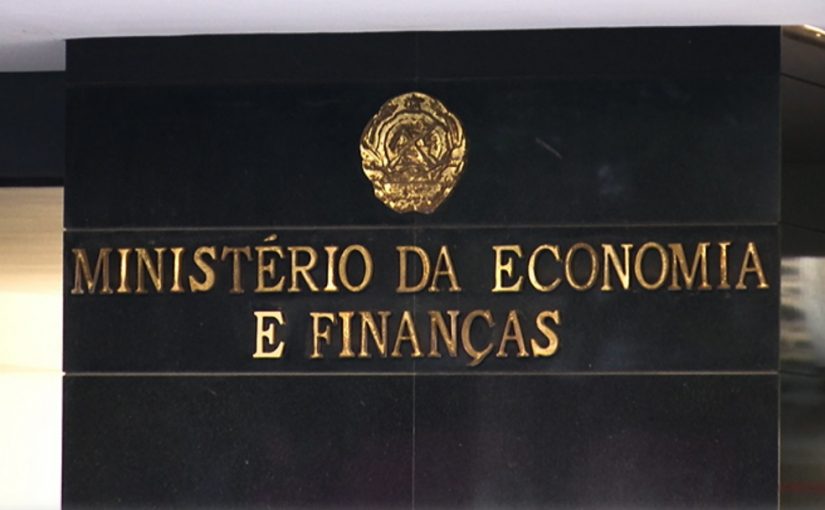Mozambique: Russia's foreign minister says Moscow may help with military aid - Watch
Mozambique: Pressure and interference make SOEs inefficient – Ministry

File photo: TVM
The state business sector is facing economic and financial inefficiencies, with several companies performing poorly. The most recent analysis of the sector’s financial health reveals that this situation is due to a paradox of its dualistic nature, which divides company objectives between social provision and profit maximization in a competitive market, a situation aggravated by “pressure” and “government interference”.
Despite moderate economic and financial health, the state business sector faces major challenges which deserve more attention. Many companies have accounts in the red, especially those classified as strategic-social enterprises.
These are some of the findings made by the ‘2020-2022 Analysis of the Financial Health of the State Business Sector ‘recently released by the Ministry of Economy and Finance.
“The challenges mentioned in the report include a low level of investment, poor returns on invested capital, dilution of shareholdings, lack of financial resources and high debt,” the analysis establishes.
The assessment explains that some state-owned enterprises (SOEs) have a dual mission of meeting both social and economic objectives, and this duality translates into a paradox between social provision and profit maximization in a competitive market.
“This can create challenges in resource allocation and decision-making, especially when social objectives conflict with the pursuit of profit or economic efficiency,” the report reads.
The assessment goes on to note that the government itself puts pressure on companies, and such interference makes it difficult to implement good management practices.
“These companies often face pressure to align their decisions and operations with the agendas and priorities of the governments that oversee them. This can result in undue interference in the company’s operations, making it difficult to implement effective and independent management practices,” the analysis reads.
In this sense, the evaluator believes that it is necessary to change the financing criteria in favour of these companies, which is why the Ministry of Economy and Finance suggests, for example, that it wants an assessment to be made of the strategic position of each of the companies in economic and financial risk analysis
“For companies that have weak economic and financial health and that play a dual role in the country, state intervention in monitoring is essential, with a view to strengthening public finances, through the provision of goods and services essential for the functioning of the country,” the analysis adduces.
The results of the analysis revealed that the 2022 was relatively better for state-owned enterprises (SOEs) than previous years, in part due to the post-Covid-19 recovery in economic activity and the series of reforms and restructuring implemented by the government.
High growth potential
According to the Ministry of Economy and Finance document, the growth potential in companies classified as strategic-structuring is extremely high.
“The SOE recovery scenario is anchored to the growth prospects of the national economy. The domestic scenario is favourable, although the external environment is troubled, especially due to geopolitical conflicts, making production inputs (commodities) more expensive and the costs of goods and services rising.”
In fact, the business volume of state-owned-enterprises experienced an estimated growth of 33.9 billion meticais between 2020 and 2022, which represented an increase from 12.6% of GDP in 2020 to 13.3% of GDP in 2022, according to the assessment.
However, despite the pace of recovery of economic-financial indicators, namely liquidity, profitability and solvency/debt, being satisfactory within consolidation perimeters, the executive speaks of the need to improve the regulatory environment with regard to efficiency in communication between the regulator and the service provider.
“Given the results of the SOEs economic and financial analyses, it is necessary to change the state financing criteria by the State in favour of these companies. It is suggested that the financing decisions taken by the Government be activated when the strategic and structuring position of each company in the economy and its potential multiplier effect are assessed, as well as the analysis of financial risk,” the report reads.
Another factor of note is that issuing guarantees to state-owned-enterprises must comply with the criteria of technical efficiency of financing proposals, sustainability, project viability among other relevant factors, in accordance with the appraisee’s approach.
The analysis emphasizes that the liquidity indicator presented an excellent performance, with emphasis on current liquidity having increased from 0.95 in 2020 to 1.32 in 2022.
“During the period under analysis, no guarantees were activated or issued to state-owned-enterprises, revealing that the criteria of technical efficiency in financing proposals, sustainability and viability of projects, among other factors, are being observed,” the report concludes.












Leave a Reply
Be the First to Comment!
You must be logged in to post a comment.
You must be logged in to post a comment.